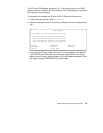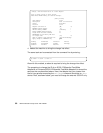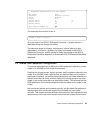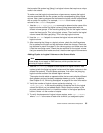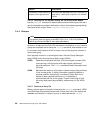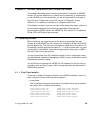
Cluster Hardware and Software Preparation 87
The TaskGuide uses a graphical interface to guide you through the steps of
adding nodes to an existing volume group. For more information on the
TaskGuide, see 3.4.6, “Alternate Method - TaskGuide” on page 90.
Importing the volume group onto the destination nodes synchronizes the
ODM definition of the volume group on each node on which it is imported.
You can use the
smit importvg fastpath to import the volume group.
Table 17. smit importvg Options
3.4.4.3 Changing a Volume Group’s Startup Status
By default, a volume group that has just been imported is configured to
automatically become active at system restart. In an HACMP for AIX
environment, a volume group should be varied on as appropriate by the
cluster event scripts. Therefore, after importing a volume group, use the SMIT
Change a Volume Group screen to reconfigure the volume group so that it is
not activated automatically at system restart.
Use the
smit chvg fastpath to change the characteristics of a volume group.
Table 18. smit crjfs Options
Options Description
VOLUME GROUP name Enter the name of the volume group that you are
importing. Make sure the volume group name is the
same name that you used on the source node.
PHYSICAL VOLUME name Enter the name of a physical volume that resides in
the volume group.
Note that a disk
may have
a
different logical name on different nodes. Make sure
that you use the disk name as it is defined on the
destination node.
ACTIVATE volume group after it
is imported?
Set the field to yes.
Volume Group MAJOR
NUMBER
If you are not using NFS, you may use the default
(which is the next available number in the valid
range). If you are using NFS, you must make sure to
use the same major number on all nodes. Use the
lvlstmajor command on each node to determine a
free major number common to all nodes.
Options Description
Activate volume group
automatically at system restart?
Set this field to no.



